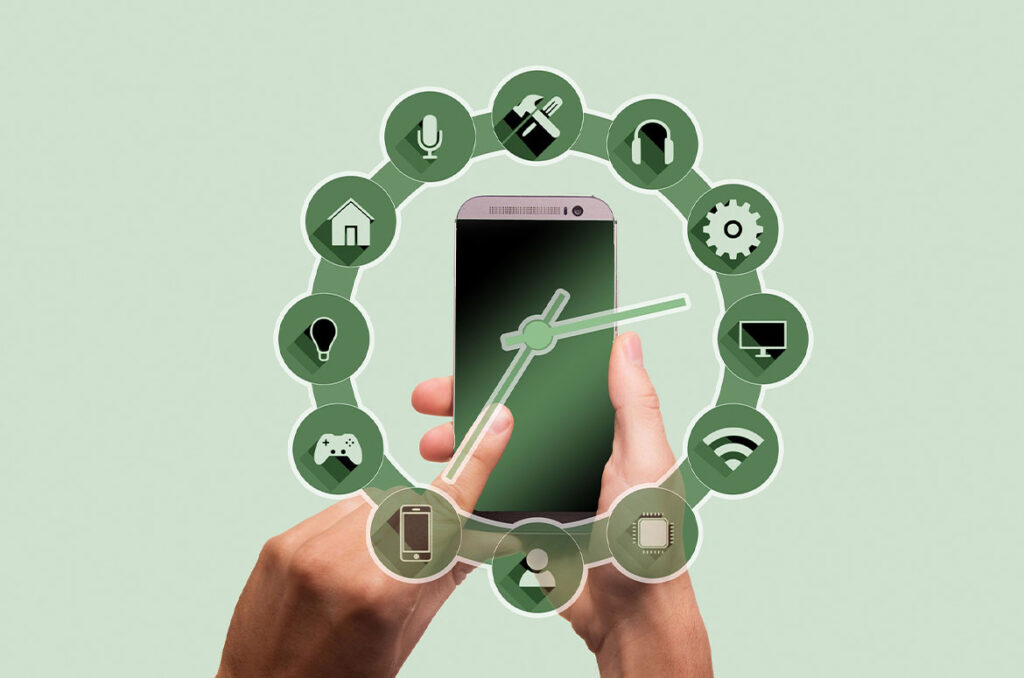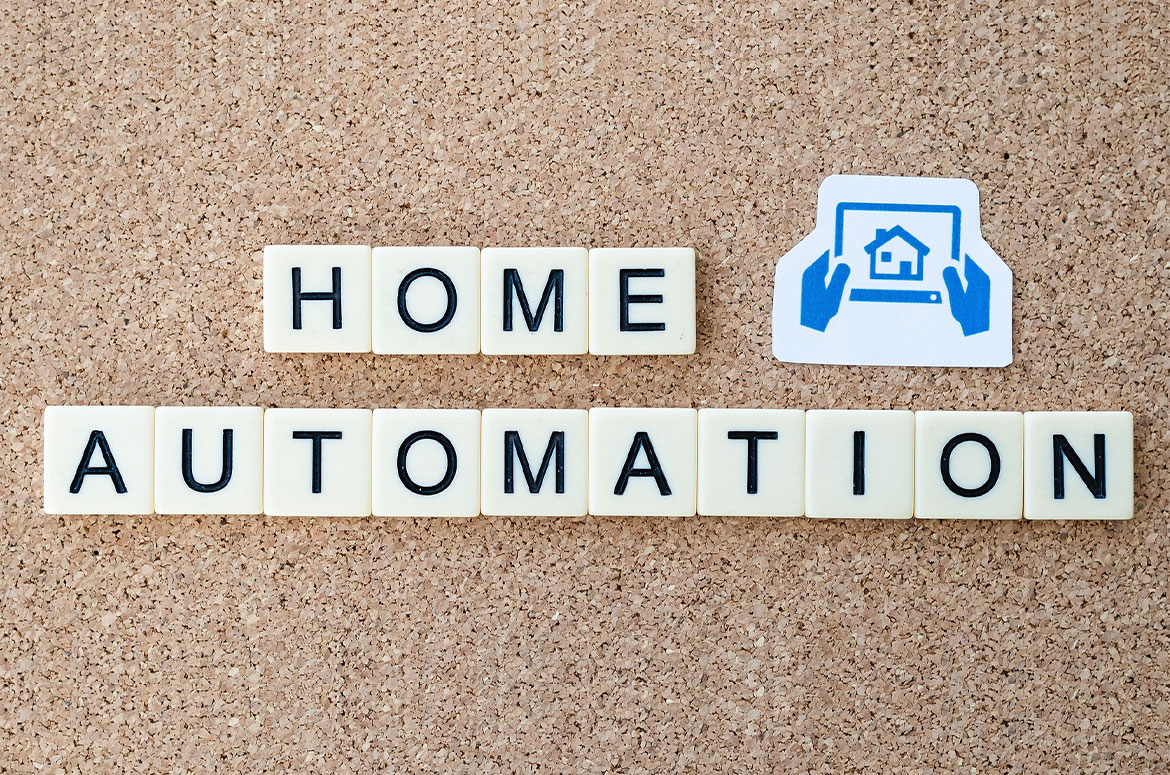In the ever-evolving landscape of technology, smart home automation has emerged as a revolutionary concept that is shaping the way we live. From enhancing convenience and security to optimizing energy efficiency, smart home automation is no longer a futuristic dream; it is a reality that is transforming our homes. In this comprehensive guide, we delve into the world of smart home automation, exploring what it is, its numerous benefits, the diverse array of devices and features available, trending ideas, real-life examples, how to get started, and a glimpse into the exciting future of this technology.
Introduction
What is Smart Home Automation?
Smart home automation, often simply referred to as “smart home,” is a technology-driven solution that enables homeowners to control and manage various aspects of their homes remotely. This encompasses a wide range of devices and systems interconnected through the Internet of Things (IoT) to enhance comfort, safety, and efficiency.
Smart home automation systems typically rely on a central hub or controller, which acts as the brain of the smart home. This hub connects to various devices, such as sensors, cameras, thermostats, and lights, and allows users to control and automate these devices through a smartphone app or voice commands.
Benefits of Smart Home Automation
The benefits of embracing smart home automation are multifaceted. They include:
- Convenience: Smart homes allow you to control devices with a simple voice command or through a mobile app, making daily tasks effortless. Imagine adjusting your thermostat, dimming the lights, and locking the doors—all with a single voice command.
- Energy Efficiency: Automation can optimize energy usage, reducing utility bills and environmental impact. For instance, smart thermostats can learn your heating and cooling preferences and adjust the temperature accordingly, saving energy when you’re away.
- Security: Smart security systems provide real-time monitoring and alerts, enhancing the safety of your home. High-definition cameras, motion sensors, and smart locks can deter intruders and provide peace of mind.
- Entertainment: Enjoy seamless access to music, movies, and games with integrated entertainment systems. Smart speakers with voice assistants can stream your favorite songs, while smart TVs offer a vast array of streaming options.
- Appliance Control: Control and monitor appliances like refrigerators, ovens, and washing machines from anywhere. Receive notifications if your refrigerator door is left open or if your laundry cycle is complete.
- Customization: Create personalized home scenes for different occasions, moods, or family members. For instance, you can set up a “Movie Night” scene that dims the lights, lowers the blinds, and turns on the home theater system with a single tap.
How Does Smart Home Automation Work?
At the core of smart home automation is connectivity. Devices communicate with a central hub or each other through wireless protocols such as Wi-Fi, Zigbee, or Z-Wave. These devices collect data, process it, and execute predefined actions. Machine learning and artificial intelligence (AI) algorithms can make these systems adaptive, learning from user preferences and behaviors.
For instance, a smart thermostat might learn that you prefer a cooler bedroom at night and a warmer living room during the day. Over time, it adjusts the temperature accordingly without you having to program specific schedules.
Smart Home Devices and Features
Smart home automation encompasses a vast ecosystem of devices and features designed to cater to diverse needs and preferences. Let’s take a closer look at some of the most important categories
Stay ahead of the tech curve with the latest news, reviews, and insights. Follow us on Google News for updates!
Smart Lighting
Smart lighting systems offer control over the intensity, color, and scheduling of lights, enhancing ambiance and energy efficiency. With smart bulbs, you can change the color of your lights to match your mood or create a gentle wake-up routine that simulates a natural sunrise.
In addition to manual control, some smart lights can sync with your daily activities. For example, they can gradually brighten in the morning to help you wake up naturally or automatically dim in the evening to promote relaxation.
Smart Thermostat
These devices optimize your home’s temperature based on occupancy and external conditions, saving energy and ensuring comfort. A smart thermostat can also adapt to your schedule. It can learn when you’re typically at home and when you’re away, adjusting the temperature accordingly to maximize energy savings.
Many smart thermostats are equipped with geofencing technology, which can detect when you leave or return home. This allows them to prepare your home’s climate accordingly, so it’s comfortable when you arrive and energy-efficient when you’re away.
Smart Security Systems
Enhance your home’s security with smart cameras, motion sensors, and doorbell cameras, providing real-time monitoring and alerts. These systems offer peace of mind whether you’re at home or away.
Modern smart security cameras are equipped with high-resolution video capture, night vision, and two-way audio, allowing you to see and communicate with visitors remotely. Some systems even offer facial recognition technology to distinguish between family members and potential intruders.
Smart Entertainment Systems
Experience immersive entertainment with integrated audio and video systems that sync with your preferences. With a voice command or a tap on your smartphone, you can start a movie night or stream your favorite playlist.
Smart speakers and soundbars have become popular additions to entertainment systems, offering high-quality audio and voice assistants like Amazon Alexa or Google Assistant. These devices not only enhance your entertainment experience but also serve as central hubs for controlling other smart devices in your home.
Also read:Biometrics in Workplace Security: Elevating Access Control
Smart Appliances
Control and monitor appliances like refrigerators, ovens, and washing machines from anywhere. Receive notifications if your refrigerator door is left open or if your laundry cycle is complete.
Smart appliances are equipped with Wi-Fi connectivity and sensors that enable remote management. For example, a smart oven can preheat itself based on your recipe, while a smart refrigerator can create shopping lists and suggest recipes based on its contents.
Smart Sensors
Sensors detect changes in the environment, triggering actions like turning on lights when motion is detected. These sensors play a crucial role in automation, making your home responsive to your needs.
Common types of smart sensors include:
- Motion Sensors: These sensors detect movement and are commonly used for security and lighting automation. For example, a motion sensor in your hallway can turn on the lights when you walk by.
- Door/Window Sensors: These sensors alert you when a door or window is opened or closed. They are essential for home security systems and can trigger alarms or notifications.
- Environmental Sensors: These sensors monitor factors such as temperature, humidity, and air quality. They can help you maintain a comfortable and healthy living environment.
Other Smart Home Devices
This category includes a wide array of smart home devices such as smart locks, blinds, and even NFC tags for automation. Let’s take a quick look at a few of these:
- Smart locks: Keyless entry and remote access control made easy. You can lock or unlock your doors using a smartphone app, a keypad, or voice commands. Some smart locks also integrate with security systems for added protection.
- Smart Blinds: Automate your window treatments to adjust for privacy, light, and temperature. Smart blinds can be scheduled to open and close at specific times or controlled remotely.
- NFC Tags: NFC (Near Field Communication) tags are small, programmable stickers or tokens that can trigger actions when touched or brought close to your smartphone. For instance, placing an NFC tag on your bedside table could trigger a “Goodnight” scene that turns off lights and sets your thermostat to a comfortable sleeping temperature.

Trending Smart Home Automation Ideas
In the ever-evolving world of smart home automation, innovation never stops. Here are some trending ideas that are shaping the future:
Voice-Activated Assistants
Voice-controlled devices like Amazon Alexa and Google Assistant are becoming central to smart homes, offering seamless control and information retrieval. These digital assistants can answer questions, control smart devices, and even provide daily news updates.
One of the exciting developments in this space is the integration of natural language processing (NLP) and AI. This allows voice assistants to understand context and have more natural and intuitive conversations with users.
Energy Management
Efficient energy management systems are becoming increasingly popular, helping homeowners reduce their carbon footprint and energy bills. Smart energy monitors provide real-time data on electricity usage, allowing you to identify energy-hungry appliances and make informed decisions about reducing consumption.
Some advanced energy management systems can even predict your energy usage patterns and recommend ways to optimize energy usage further. For example, they might suggest adjusting your thermostat settings or running your dishwasher during off-peak hours.
Automated Security Systems
Advanced security systems can recognize faces, detect anomalies, and even communicate with emergency services. Facial recognition technology is making it easier to identify family members and authorized guests while alerting you to potential intruders.
Moreover, some security systems can integrate with smart locks, allowing you to remotely grant access to trusted individuals. For instance, you can let a repairperson into your home without being physically present.
Home Entertainment
Immersive home theaters and gaming setups are now within reach, thanks to automation. High-definition projectors, motorized screens, and surround sound systems can recreate the cinema experience in your own home.
Gaming enthusiasts can take advantage of smart lighting that syncs with gameplay, creating dynamic and immersive visuals. Additionally, streaming platforms are continually expanding their content libraries, providing endless entertainment options for users.
Automated Window Treatments
Smart blinds and curtains can adjust based on light and temperature, maximizing energy efficiency. Some smart window treatments are equipped with light sensors that automatically close blinds during the hottest part of the day to block out heat.
Moreover, these systems can be integrated into your overall home automation setup. For example, you can schedule your blinds to open gradually in the morning to gently wake you up.
Water Management
Monitor and control water usage in your home to conserve resources and save on bills. Smart irrigation systems can adjust watering schedules based on weather conditions, ensuring your lawn and garden receive the right amount of water without waste.
Additionally, smart leak detectors can alert you to potential water leaks in real-time, preventing costly damage. These detectors are especially valuable for places like basements and bathrooms.
Personalized Home Scenes
Create custom scenes for movie nights, parties, or relaxation, adjusting lighting, temperature, and entertainment settings. With a single command or tap on your smartphone, you can transform your living space to match the occasion.
For example, a “Romantic Dinner” scene might lower the lights, play soft music, and set the dining room to a cozy temperature. These scenes not only enhance ambiance but also simplify daily routines.
Home Health Monitoring
Medical-grade sensors and devices can monitor vital signs and send alerts to healthcare providers if needed. This is particularly valuable for elderly individuals who wish to age in place while maintaining their health and independence.
Smart health devices can measure parameters such as blood pressure, heart rate, and blood glucose levels. Data collected from these devices can be securely shared with healthcare professionals, allowing for timely intervention and better care.
Smart Home Automation Examples
To provide a more tangible understanding of smart home automation, here are some specific examples of commonly used devices:
Smart Lights
Smart bulbs and lighting systems can be controlled remotely, allowing you to set the perfect mood. Some advanced systems offer color-changing capabilities, enabling you to transform your living space with a spectrum of colors.
In addition to manual control, smart lights can be programmed to follow schedules or respond to triggers. For instance, you can set outdoor lights to turn on at sunset and off at a specific time or when motion is detected.
Smart Plugs
Turn any standard appliance into a smart device by plugging it into a smart outlet, enabling remote control and scheduling. Smart plugs are a cost-effective way to automate appliances like lamps, coffee makers, and fans.
For example, you can plug a fan into a smart plug and schedule it to turn on in the evening to cool down your bedroom before bedtime. You can also control it remotely if your plans change.
Smart Thermostat
Manage your home’s climate efficiently with a smart thermostat that adapts to your preferences and lifestyle. These thermostats typically have intuitive interfaces and can be controlled through smartphone apps.
One notable feature of smart thermostats is geofencing. By using your smartphone’s location, they can detect when you leave and return home. This allows them to adjust the temperature settings for optimal comfort and energy savings.
Robot Vacuums
Automate your cleaning routine with robotic vacuums that navigate your home and keep it spotless. These smart devices use sensors to map your living space and avoid obstacles.
Advanced models are equipped with features like room recognition, which allows them to focus on specific areas or return to their docking stations when the job is done. Some even offer mopping capabilities for thorough cleaning.
Smart Locks
Enhance security and convenience with keyless entry and remote access control. Smart locks offer various methods of unlocking, including PIN codes, fingerprint recognition, and smartphone apps.
Moreover, they provide detailed access logs, allowing you to track who enters and exits your home and when. This feature is especially useful for Airbnb hosts or families with children.
Sensors
Motion, door/window, and environmental sensors make your home responsive to your needs and enhance safety. Let’s explore their roles further:
- Motion Sensors: These sensors are commonly used for lighting automation and security. They can turn on lights when they detect movement, whether it’s someone entering a room or a pet moving around.
- Door/Window Sensors: Door and window sensors are essential components of security systems. They trigger alarms or notifications when doors or windows are opened unexpectedly, alerting you to potential intruders.
- Environmental Sensors: Environmental sensors monitor factors like temperature, humidity, and air quality. For instance, they can detect high humidity levels and activate a dehumidifier to prevent mold growth. Some sensors can even adjust thermostats and ventilation systems to maintain optimal conditions.
Mesh WiFi
Ensure seamless connectivity throughout your home with mesh WiFi systems that eliminate dead zones. Traditional single-router setups may struggle to cover large homes or spaces with thick walls.
Mesh WiFi systems consist of multiple nodes or access points that work together to create a unified network. They intelligently route data to the nearest and fastest node, ensuring stable and high-speed internet access in every corner of your home.
Smart Doorbells
Monitor your front door with video doorbells that provide real-time video and two-way communication. These devices offer enhanced security and convenience, allowing you to see and speak with visitors remotely.
Many video doorbells also have motion detection and night vision capabilities. Some models can even recognize familiar faces and provide customized alerts.
Smart Blinds
Automate your window treatments to adjust for privacy, light, and temperature. Smart blinds can be scheduled to open and close at specific times or controlled remotely.
Some advanced smart blinds are equipped with light sensors that detect sunlight and adjust accordingly. They can also be integrated with voice assistants for hands-free control.
NFC Tags
Use NFC tags for automation triggers, such as setting your phone to “silent” mode when placed on a designated tag. These small, programmable tags can be placed strategically around your home to streamline daily routines.
For example, you can place an NFC tag by your bedside. When you tap your phone on it before sleep, it can activate a “Sleep Mode” scene that adjusts the lights, thermostat, and locks your doors.
How to Set Up Your Smart Home
Embarking on your smart home automation journey is exciting. Here are Here’s how to get started:
Select the Smart Home Devices That Are Perfect for You
Assess your priorities and select devices that align with your lifestyle and goals. Consider factors such as the size of your home, your budget, and the specific features you desire.
Start with foundational devices like smart lighting and a smart thermostat. These offer immediate benefits and can form the basis for expanding your smart home ecosystem.
Set Up Your Smart Home Devices
Follow manufacturer instructions to set up and connect your devices to your home network. Most devices have user-friendly apps that guide you through the setup process.
Ensure that your devices are compatible with your smartphone’s operating system (iOS or Android) and that they are connected to a stable Wi-Fi network for seamless operation.
Create Routines and Automations
Leverage automation platforms like Amazon Alexa, Google Home, or Apple HomeKit to create customized routines. These routines can automate common tasks and scenarios in your home.
For example, you can create a “Good Morning” routine that turns on the lights, adjusts the thermostat, and provides you with a weather update when you say, “Good morning” to your voice assistant.
Control Your Smart Home System
Use smartphone apps or voice commands to control your devices from anywhere, giving you complete flexibility. Ensure that you have the corresponding app installed on your smartphone and that your voice assistant is set up and linked to your devices.
Voice control is especially convenient when you want to make quick adjustments without reaching for your phone. For instance, you can simply say, “Turn off the lights” or “Lock the front door.”
The Future of Smart Home Automation
As technology continues to advance, the future of smart home automation holds exciting possibilities:
More Integrated and Seamless Systems
Expect tighter integration between devices and ecosystems, simplifying control and enhancing the user experience. This means that smart devices from different manufacturers will work seamlessly together, reducing compatibility issues.
For example, in the future, you could set up a “Home Security” scene that activates your smart locks, cameras, and alarm system with a single command, regardless of the brands of the devices.
More Personalized Experiences
AI will play a significant role in creating personalized automation based on user preferences and habits. Smart homes will become more intuitive, adapting to your routines and anticipating your needs.
For instance, your smart home might learn that you prefer cooler temperatures during your evening yoga sessions and automatically adjust the thermostat and lighting accordingly.
More Affordable and Accessible Devices
As technology matures, costs are likely to decrease, making smart home automation accessible to a broader audience. This democratization of technology will enable more homeowners to enjoy the benefits of automation without breaking the bank.
In addition to affordability, expect more user-friendly interfaces and setup processes that make smart home technology more approachable for those who may not be tech-savvy.
Conclusion
In conclusion, smart home automation is revolutionizing modern living by offering unparalleled convenience, security, and efficiency. With a wide array of devices and features to choose from, homeowners can create tailored experiences that suit their lifestyles. As the technology evolves, we can anticipate even more integration, personalization, and affordability in the world of smart home automation.




One thought on “Smart Home Automation: Revolutionizing Modern Living”